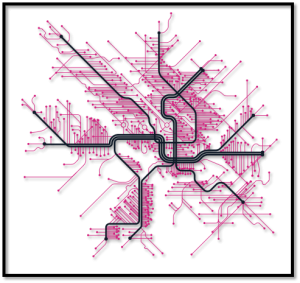Shared Mobility – Complementing Public Transit in the Nation’s Capital
In the DC region, shared mobility (Uber, Lyft, etc.) are actually complementary to the transit network. Here’s why we see opportunities to consider even better system integration.
“Transportation Network Companies” – you know them as Uber, Lyft and a host of other brands – are now part of the urban transportation landscape. Some have suggested that the rise of their popularity contributes to ridership decline on Metrorail and still others have heralded their emergence as the end of transit as we know it. Always focused on investigating trends and proliferating fact rather than folklore, we wanted to know the truth. Should Metro be nervous? Are customized trips like these going to put traditional bus and rail out of business?
Unlikely.
Research (PDF) published by the American Public Transit Association and Transportation Research Board – and which I had the pleasure of helping to oversee – tells us that customers of ridesourcing tend to use the services when transit is less available as well as to get to destinations not easily served by traditional transit. Furthermore, we learned that in the DC region especially, these TNCs tend to function as informal “Metrorail shuttles” – almost two thirds of Uber trips in the District begin or end at a Metrorail station, and slightly more than a third of Uber trips follow that pattern when we zoom out to the entire region. Similar statistics prevail when examining the usage of car sharing companies such as Zipcar and Enterprise. Finally, the data indicates that 57% of frequent users of ridesourcing companies as well as car- and bike-sharing customers identified bus and rail transit as their preferred transportation mode. This tells us that these services have an important role in complementing the Metro rail system for many customers. Read more…
Read more…


Recent Comments